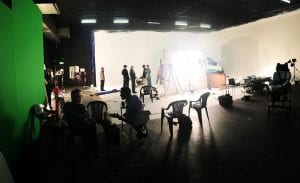Deciding to make a corporate video is a response to a communication challenge. For example:
- You want to communicate with your staff more effectively
- You need to engage visitors when they visit your website
- You need your training to be more standardised and efficient
- You want to highlight the features and benefits of a product
The first step in the production process is to create a corporate video brief. This document serves as the blueprint for the project. A well-written brief will help communicate the specifications and requirements of the project to the video production company. If you’re not familiar with creating a brief, there are many online resources that can help you. A good video production company will also help to guide you through the brief process.
It’s good practice to have all project stakeholders involved in the brief creation project. That way, everyone’s needs can be incorporated, and a unified and coherent strategy is created from the start.
Based on your brief, the corporate video production company will create a proposal. This defines the approach that will be taken, the time and resources required, associated investment, and timeline.

Once you select your production company, a preproduction meeting will be scheduled. The meeting is an opportunity to analyse and discuss the requirements. Based on this meeting, the production company will create a script, shot list, and schedule. These are the working documents that define everything that will go into your video.
Filming will then take place, and follow the requirements set out in your preproduction documents.
Once filming has been completed, your footage will be brought into the edit suite, and safely backed up.
Your editor will then set to work on creating the first draft of your video. The first draft is an early version of your completed video without fine touches like colour grading, effects or a sound mix. Once the first draft has been completed you have the opportunity to provide feedback and suggest changes. It gives you the opportunity to see how things are coming together.
The editor then incorporates your changes into the Fine Cut of your corporate video. Your edit is now moving to a more advanced stage. Features such as transitions, titles and graphics are now incorporated. Once again, you have an opportunity to view the work and give your thoughts.
The video editor now moves to the final cut: a final cut of your video that is ready to present to the world.
Once you’ve approved your corporate video, the next step is distribution. Usually the video is place on your website and shared with your audience.
It’s smart at this stage to track how your video is performing, whether it is through keeping an eye on number of views, percentage of video watched, or other useful metrics.

Ryan Spanger is one of Melbourne’s most respected and sought-after video production professionals. Ryan founded Dream Engine in 2002, and specialises in helping medium to large corporates, government departments, and the non-profit sector to connect with their audience more effectively by using video.

